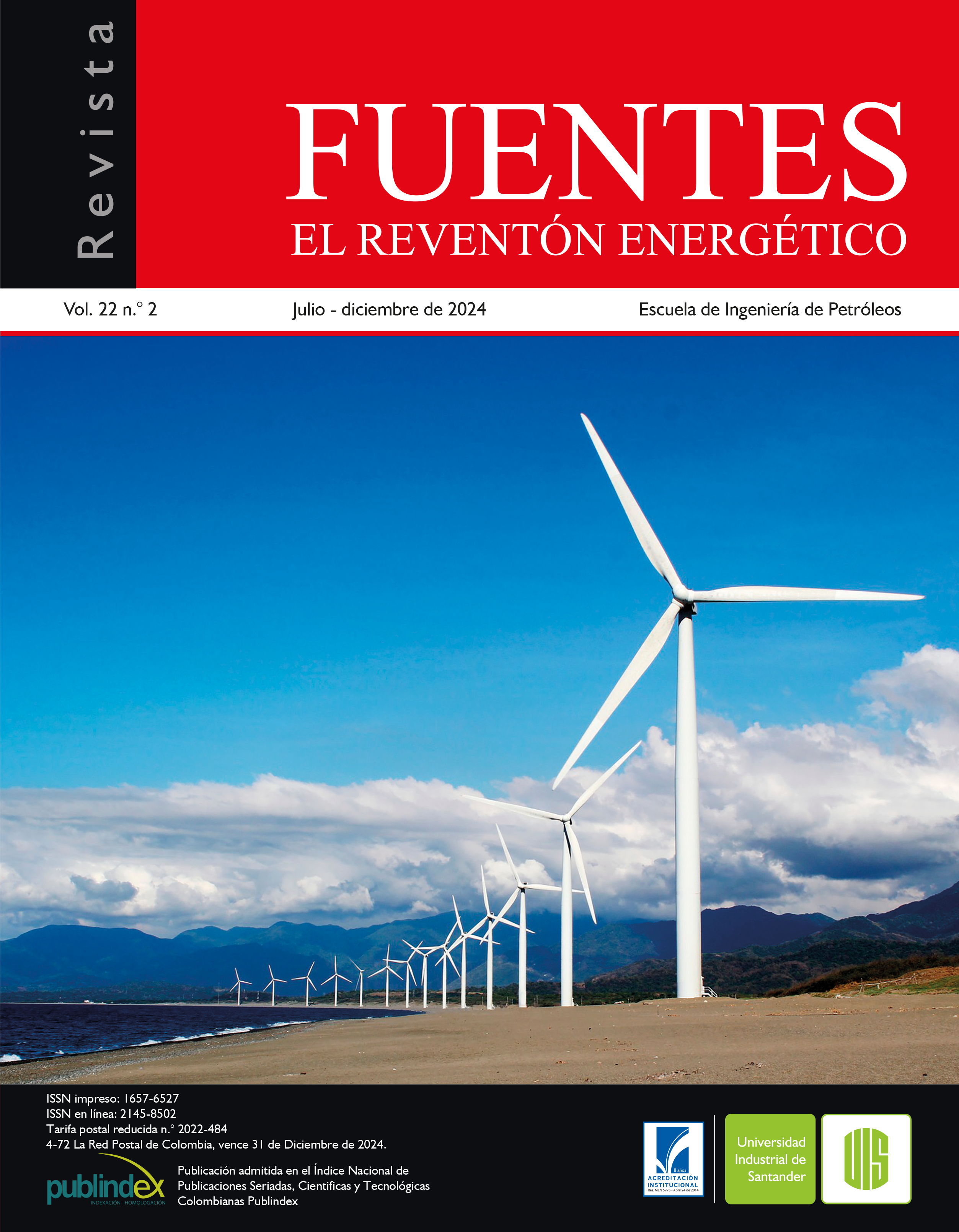Published 2024-10-16
Keywords
- Conductive pipe,
- ENR,
- Diesel hammer,
- Rejection point,
- Conductor driving
How to Cite
Copyright (c) 2024 Fuentes, el reventón energético

This work is licensed under a Creative Commons Attribution 4.0 International License.
Abstract
In certain Latin American countries such as Ecuador, Colombia, Peru and Mexico; the initial drilling section of a well corresponds to the 26-inch section, which is lined with 20-inch conductive pipe. Currently this initial section of the well is carried out with drilling drills, but the use of a diesel hammer is also being chosen to drive the conductive pipe. The use of the ENR formula is one of the simplest and most used methods to determine the allowable load capacity and resistance of the driven pipe for each blow applied due to its simplicity, since it is only necessary to know the technical specifications of the conductive pipe to be driven and the model of diesel hammer to be used. In addition, it must be considered that not all models of diesel hammers can be used to carry out the driving work of the conductor pipe and that exceeding the rejection point in the last foot driven could cause the collapse of the conductor pipe. Using a diesel hammer for driving conductive pipe can offer a 50% savings compared to the costs associated with drilling drills. This savings makes the diesel hammer a very attractive option for carrying out the initial section of a well.
Downloads
References
- Almadhoun, Y. (2014). Civil Engineering Department: Foundation Engineering (ECIV 4052). Gaza: Cengage Learning. Obtenido de https://es.scribd.com/document/473700431/Chapter-09
- American Piledriving Equipment (APE). (s.f.). Refusal Criteria for Diesel and Hydraulic Impact Hammers. Obtenido de http://www.americanpiledriving.com/pdfs/diesels/Refusal%20Criteria%20Impact%20Hammers.pdf
- Bañón, L., & Beviá, J. (2000). Manual de Carreteras. Volumen II: Construcción y Mantenimiento. España: Ortiz e Hijos, Contratista de Obras, S.A. Obtenido de http://hdl.handle.net/10045/1787
- Bauer-Pileco, INC. (2012). Hammer Operations Manual: Follow Our Lead To A Solid Foundation. Houston: BAUER-PILECO. Obtenido de https://www.geoquipusa.com/wp-content/uploads/2017/07/Operations_Manual_2012.pdf
- British Standards. (1994). Code of Practice for Earth Retaining Structures. Reino Unido: BSI.
- DELMAG. (2022). Diesel Pile Hammers. Niedernberg: DELMAG GmbH & Co. KG. Obtenido de https://www.delmag.com/downloads.html?file=files/content/
- Fragaszy, R., Higgins, J., & Lawton, E. (1985). Development of Guidelines for Construction Control of Pile Driving and Estimation of Pile Capacity. Pullman: Washington State University. Obtenido de https://www.wsdot.wa.gov/research/reports/fullreports/068.1.pdf
- Global Piling Equipment, Inc. (2015). Operating Instructions Diesel Hammers D6-D180. Conroe: GPE. Obtenido de https://www.geoquipusa.com/wpcontent/uploads/2017/06/OperationsManual2.pdf
- Indian Standard. (2010). Design and Construction of Pile Foundations — Code of Practice. New Delhi: Bureau Of Indian Standards. Obtenido de https://law.resource.org/pub/in/bis/S03/is.2911.1.1.2010.pdf
- Murthy, V. (2006). Geotechnical Engineering: Principles and Practices of Soil Mechanics and Foundation Engineering. New York: Marcel Dekker. Obtenido de https://ftp.idu.ac.id/wp-content/uploads/ebook/tdg/TERRAMECHANICS%20AND%20MOBILITY/geotechnical-engineering-principles-and-practices-of-soil-mechanics-and-foundation-engineering-vns-murthy.pdf
- Rausche, F., & Klesney, A. (2007). Hammer Types, Efficiencies and Models in GRLWEAP. Ohio: GRL Engineers, Inc. Obtenido de https://pdiwebsitestorage.blob.core.windows.net/websitedocstorage/2017/03/200711thAnualHammertypes.pdf
- Thadapaneni, K., Venkata, S., & Grandhi, R. (2017). Analysis of pile foundation: Simplified methods to analyse the pile foundation under lateral and vertical loads. IJEDR, 5(3), 991-1001. Obtenido de https://www.ijedr.org/papers/IJEDR1703139.pdf
